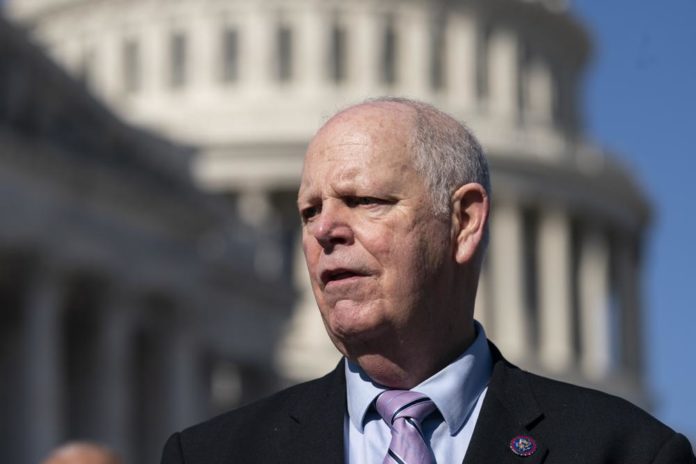
Cowboy caviar is more expensive to make. Tractor parts are in short supply. And employees are hard to find.
One voter, Hallie Overman-Jackman, sees a path to improving the economy, and that’s to vote the Republican ticket in next month’s general election.
“I can say this, two years ago, our family was in a much better position,” said the Payson resident, whose husband runs a commercial maintenance and landscaping company.
Angie Maloney views the political landscape differently. She tells voters on the Navajo Nation where she lives that it’s Democrats who consistently deliver much-needed services and funding for education, health care and housing for Native Americans.
“If Republicans take over in Washington, the state, we’re in trouble,” she says.
Both women live in Arizona’s vast 2nd Congressional District that will be a key factor in determining which political party has the majority in the state’s delegation and, ultimately, which party controls the U.S. House. Democrats have held the district for the past decade, but it’s never been a Democratic stronghold. The district now leans strongly Republican since the once-per-decade redistricting process added the Republican-heavy city of Prescott.
Early voting started Wednesday.
Former Navy SEAL Eli Crane emerged from a crowded field of Republican candidates in the primary to take on Democratic U.S. Rep. Tom O’Halleran, who has held the seat since 2017. Whoever wins will represent a district that stretches from far northern Arizona, through the eastern part of the state and takes in suburbs north of Tucson. It also includes 14 of the 22 Native American nations in the state.
Republicans see it as the most winnable of three potential pickups this year in Arizona. The other two are the 4th District in the eastern Phoenix suburbs and the 6th, which takes in parts of Tucson and the southeastern part of the state.
Democrats are hoping to flip the 1st District in the northeast Phoenix suburbs, although it’s a long shot in a year shaping up as a good one for the Republican Party. Democrats currently hold five of the nine Arizona U.S. House districts.
O’Halleran, who lives in Sedona, is working hard against the odds, driving to events across the region and reminding voters that this has been his routine the whole time he’s been in office.
The former Republican state lawmaker and police officer is a moderate Democrat who says his votes in Congress will ensure the U.S. emerges from the COVID-19 pandemic in a stronger economic position, even as the party faces criticism for rising inflation.
“That investment is going to allow us to look out and say, ‘our ports are competitive now with ports across the world, our roads, our rail, you name it, we are going to be independent,’” O’Halleran said in an interview before a recent town hall in Flagstaff that drew a dozen sympathetic supporters. “We’ll be able to maintain our premier status as the world’s economy.”
Crane, an Oro Valley resident, runs a small business turning spent machine gun ammunition into bottle openers and has the endorsement of former President Donald Trump. Crane didn’t respond to interview requests from The Associated Press. He has focused his campaign on securing the U.S.-Mexico border, election integrity, and combatting wasteful spending.
O’Halleran and Crane haven’t faced each other on a debate stage this election season. The district now has about 30,000 more voters registered as Republican than Democrat, but more than 160,000 voters aren’t registered with either party.
The issues in the 2nd Congressional District are wide-ranging and include drought, wildfires, border security and tribal sovereignty. Inflation and the economy are on most everyone’s mind.
Cowboy caviar, a dip Overman-Jackman makes using canned beans that have more than quadrupled in price, has been her go-to dish for gatherings. A tractor part her husband needed for his business took more than a year to come in, and they’ve had trouble getting fully staffed.
Overman-Jackman, 70, said she believes Crane can relate as a businessman.
“We still have expenses; we have mortgage payments, rent payments, insurance, whatnot,” she said. “It just seems like our whole economic world has been turned upside down.”
Maloney, who worked in environmental health and injury prevention for the Indian Health Service for 40 years, lived without running water most of her life. She’s concerned about a longstanding drought that has limited water in the U.S. West, the prospect of illegal drugs eroding Navajos’ culture and identity, and limits to reproductive freedom.
“At least Tom O’Halleran has been here,” said Maloney, who is 73. “I don’t think anybody can speak on our behalf if they don’t get out here and see how the people live, what their concerns are,” she said. “He’s pretty knowledgeable on different things.”
Republished with the permission of The Associated Press.














